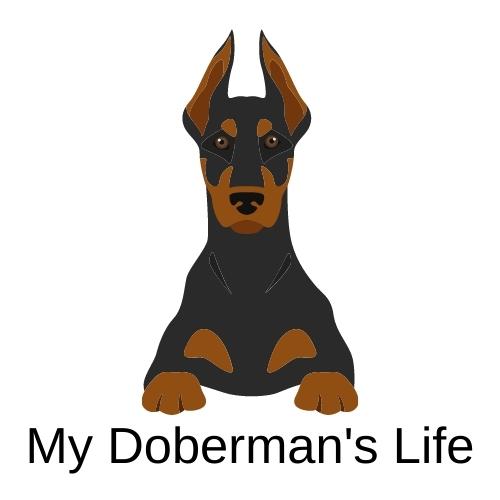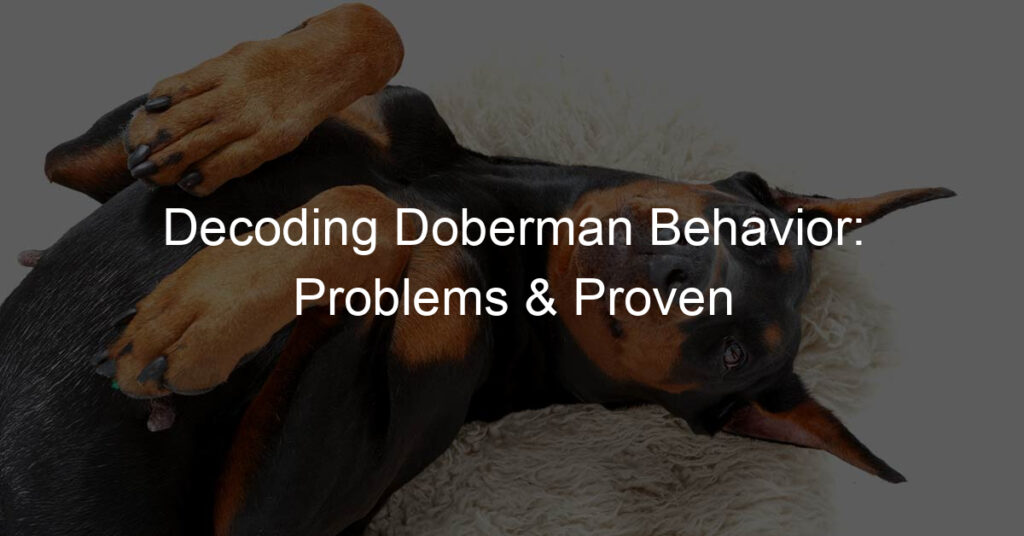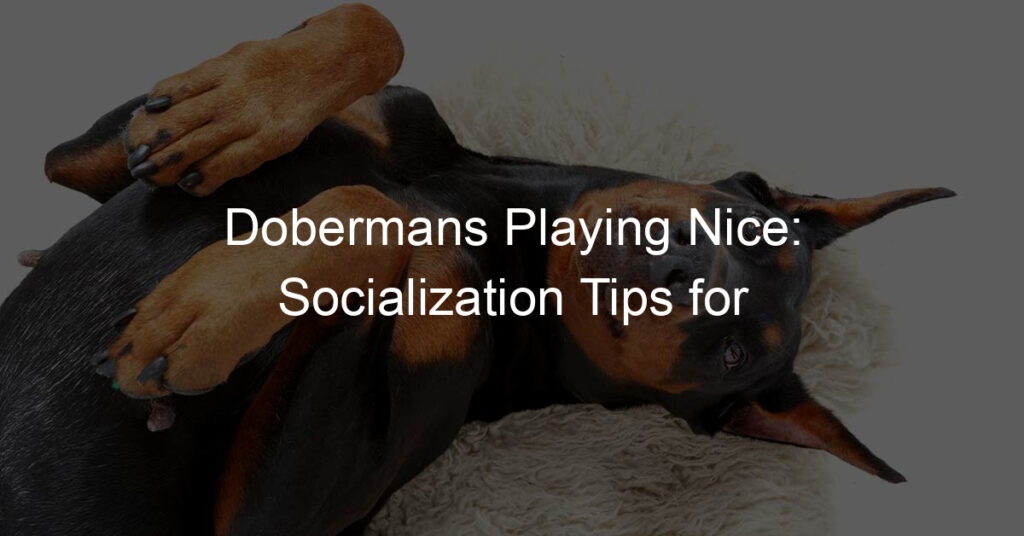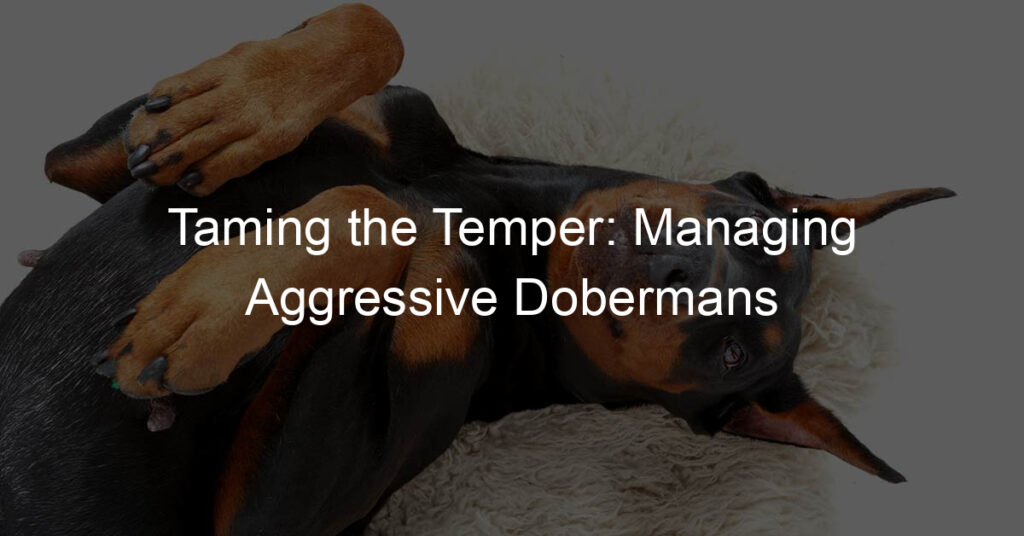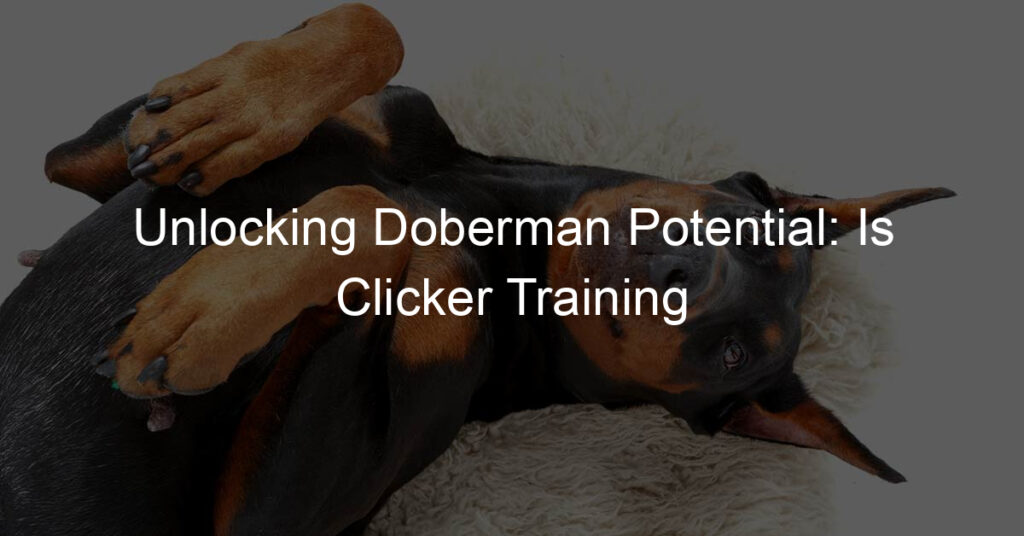
Understanding Doberman Behavior
Dobermans are known for their loyalty, intelligence, and strong protective instincts. However, understanding their behavior requires a deeper look into their common traits, the importance of socialization, and their body language.
- Recognizing common Doberman traits
Dobermans are often characterized by their high energy levels and intelligence. They are quick learners and have a natural instinct to protect their families. They are also known to be loyal and extremely affectionate with their owners. However, they can be wary of strangers and may exhibit protective behavior if they perceive a threat.
| Common Doberman Traits |
|---|
| High energy |
| Intelligence |
| Loyalty |
| Protectiveness |
- Understanding the importance of socialization
Socialization is crucial for Dobermans. It helps them get used to different environments, people, and other animals. This process should ideally start when they are puppies and continue throughout their lives. A well-socialized Doberman is likely to be more confident, less anxious, and less likely to exhibit aggressive behavior.
- Decoding Doberman body language
Understanding Doberman body language can help you better understand their needs and emotions. For instance, a wagging tail often indicates excitement or happiness, while flattened ears may signify fear or submission. A raised tail and stiff body could indicate that your Doberman is alert or agitated.
Remember, every Doberman is unique and may exhibit different behaviors. However, understanding these common traits, the importance of socialization, and their body language can help you build a stronger bond with your Doberman.
Doberman Behavior Issues
Dobermans are known for their loyalty and intelligence, but like any breed, they can exhibit certain behavior issues. Understanding these issues can help you better manage your Doberman’s behavior and ensure a harmonious relationship. Let’s delve into some of the common behavior problems Dobermans may exhibit.
Common Doberman Behavior Problems
- Aggression
- Anxiety
- Excessive Barking
- Destructive Behavior
Aggression in Dobermans can manifest in various ways, such as growling, snapping, or biting. It’s crucial to understand that aggression is often a response to fear or a perceived threat. Early socialization and training can help manage this behavior.
Dobermans are prone to anxiety, which can be triggered by various factors like separation, loud noises, or unfamiliar environments. Symptoms may include excessive barking, pacing, or destructive behavior. Providing a safe and secure environment can help alleviate anxiety.
Excessive barking is often a sign of boredom or anxiety in Dobermans. Regular exercise and mental stimulation can help reduce this behavior. It’s also important to understand that barking is a natural way for dogs to communicate, so it’s not always a behavior issue.
Destructive behavior in Dobermans, such as chewing or digging, is often a sign of boredom or anxiety. Providing plenty of physical exercise and mental stimulation can help curb this behavior. Additionally, providing appropriate chew toys can redirect this behavior in a positive way.
Understanding these common behavior issues in Dobermans is the first step towards managing them effectively. In the following sections, we’ll delve deeper into each of these issues and provide solutions to help you and your Doberman live in harmony.
Doberman Aggression Problems
Aggression in Dobermans can be a serious issue, but it’s important to understand that it’s often rooted in certain triggers or circumstances. Let’s delve into the root causes, signs, and a case study on managing this behavior.
- Understanding the root of aggression
- Recognizing signs of aggression
- Case study: Managing aggression in a Doberman
Aggression in Dobermans, like many other breeds, can stem from a variety of sources. It could be due to fear, territorial instincts, or a reaction to perceived threats. It’s crucial to remember that aggression is not a trait inherent to the breed, but often a response to their environment or treatment.
Recognizing aggression in your Doberman is the first step towards managing it. Signs can include growling, baring teeth, and a stiff body posture. More subtle signs might include a fixed gaze or raised fur along their back. If you notice these signs, it’s important to take steps to address the issue promptly.
Let’s consider the case of Max, a 3-year-old Doberman who began showing signs of aggression. His owners noticed he would growl when approached while eating. With the help of a professional dog trainer, they implemented a behavior modification plan. This included positive reinforcement training, where Max was rewarded for calm behavior. Over time, Max’s aggressive tendencies reduced significantly, demonstrating that with patience and the right approach, aggression in Dobermans can be managed effectively.
In conclusion, understanding and recognizing the signs of aggression in Dobermans is key to managing this behavior. With patience, consistency, and the right training methods, it’s possible to curb aggressive tendencies and ensure your Doberman is a happy, well-adjusted member of your family.
Doberman Training Solutions
Training your Doberman is an essential part of owning this intelligent and energetic breed. Let’s delve into some effective training solutions that can help you and your Doberman live in harmony.
Doberman Obedience Training
Obedience training is a crucial part of any dog’s upbringing, especially for a breed as energetic and intelligent as the Doberman. Let’s explore the importance of obedience training, some effective techniques, and a case study of successful obedience training.
- Importance of obedience training
- Effective obedience training techniques
- Case study: Successful obedience training
Obedience training is not just about making your dog follow commands. It’s about creating a strong bond between you and your pet, establishing you as the pack leader. This training helps your Doberman understand what is expected of them, leading to a happier and more peaceful home environment.
Training a Doberman requires patience, consistency, and positive reinforcement. Start with basic commands like ‘sit’, ‘stay’, and ‘come’. Always reward your dog’s good behavior with treats or praise to encourage them. Remember, training should be a fun and enjoyable experience for both you and your Doberman.
Consider the story of Max, a once unruly Doberman who transformed into a well-behaved pet through consistent obedience training. Max’s owner started training him at a young age, focusing on basic commands. Over time, Max started responding positively to the commands and became more disciplined. This case study highlights the effectiveness of consistent and positive obedience training.
In conclusion, obedience training is a vital aspect of raising a Doberman. It not only helps in managing your dog’s behavior but also strengthens your bond with them. Remember, every dog is unique, and what works for one might not work for another. So, be patient and consistent with your training, and you’ll see positive results in no time.
Doberman Behavior Correction
Correcting your Doberman’s behavior is a crucial part of their training. This section will help you understand behavior correction, effective techniques, and key takeaways for successful behavior correction.
- Understanding Behavior Correction
Behavior correction is about teaching your Doberman the difference between acceptable and unacceptable behavior. It’s not about punishment, but about guiding them towards making the right choices. For example, if your Doberman has a habit of jumping on guests, behavior correction would involve teaching them to sit or stay when someone enters your home.
- Effective Behavior Correction Techniques
There are several effective techniques for correcting your Doberman’s behavior. Here are a few:
- Positive Reinforcement: This involves rewarding your Doberman for good behavior. The reward could be a treat, a toy, or praise. This encourages them to repeat the behavior.
- Redirection: If your Doberman is engaging in an undesirable behavior, redirect them to a more acceptable activity. For instance, if they are chewing on furniture, give them a chew toy instead.
- Consistency: Consistency is key in behavior correction. Make sure to correct the behavior every time it occurs, so your Doberman understands it’s not acceptable.
- Key Takeaways for Successful Behavior Correction
Here are some important points to remember for successful behavior correction:
| Key Takeaway | Description |
|---|---|
| Patience | Behavior correction takes time. Be patient with your Doberman and celebrate small victories. |
| Consistency | Be consistent in your correction techniques. This helps your Doberman understand what is expected of them. |
| Positive Reinforcement | Always reward good behavior. This encourages your Doberman to repeat it. |
In conclusion, understanding and effectively applying behavior correction techniques can significantly improve your Doberman’s behavior. Remember, patience and consistency are key, and always reward good behavior.
Doberman Behavior Modification
Modifying the behavior of your Doberman can be a challenging task. But, with the right knowledge and approach, you can help your dog become a well-behaved member of your family. Let’s dive into the world of Doberman behavior modification.
- Understanding behavior modification
- Steps for successful behavior modification
- Identify the behavior you want to change.
- Understand why your dog is exhibiting this behavior.
- Use positive reinforcement to encourage new behaviors.
- Be patient and consistent with your training.
- Seek professional help if needed.
- Case study: Successful behavior modification
Behavior modification is a process used to change unwanted behaviors in dogs. It involves identifying the behavior you want to change, understanding why your dog is exhibiting this behavior, and then using positive reinforcement to encourage new, more desirable behaviors.
For example, if your Doberman is constantly barking, you would first identify what triggers the barking. Then, you would use rewards, like treats or praise, to encourage your dog to stay quiet when exposed to these triggers.
Here are some steps you can follow for successful behavior modification:
Let’s look at a case study of successful behavior modification. Max, a two-year-old Doberman, had a habit of jumping on people. His owner identified the behavior, understood that Max was doing this out of excitement, and started using positive reinforcement to encourage Max to stay on the ground when people entered the room.
Every time Max stayed on the ground, he was rewarded with a treat. Over time, Max started to associate staying on the ground with receiving a treat and stopped jumping on people. This is a great example of how behavior modification can be used to change unwanted behaviors in dogs.
In conclusion, behavior modification is a powerful tool that can help you manage your Doberman’s behavior. Remember, patience and consistency are key. Happy training!
Managing Doberman Behavior
Managing the behavior of a Doberman can be a challenging task, but with the right approach, it can be done effectively. In this section, we will delve into the solutions for common Doberman behavior problems.
Doberman Behavior Problems Solutions
Understanding the root of behavior problems, finding effective solutions, and learning from successful case studies can help you manage your Doberman’s behavior.
- Understanding the Root of Behavior Problems
- Effective Solutions for Common Behavior Problems
- Case Study: Successful Management of Behavior Problems
Understanding the root cause of your Doberman’s behavior problems is the first step towards finding a solution. Dobermans are intelligent and energetic dogs. If they are not given enough mental and physical stimulation, they can develop behavior problems. Lack of training and socialization can also lead to problems like aggression and anxiety.
Once you understand the root cause of your Doberman’s behavior problems, you can start working on solutions. Training is often the most effective solution. This includes obedience training, socialization, and mental stimulation. Providing your Doberman with plenty of exercise can also help manage behavior problems. Remember, every dog is unique, so what works for one might not work for another.
Let’s look at a case study of a Doberman named Max. Max was showing signs of aggression and anxiety. His owner, after understanding the root of these problems, started providing Max with more exercise and mental stimulation. He also enrolled Max in obedience training. After a few months, Max’s behavior improved significantly. This case study shows that with understanding, patience, and the right approach, behavior problems in Dobermans can be managed successfully.
In conclusion, managing Doberman behavior requires understanding the root causes of their behavior problems, implementing effective solutions, and learning from successful case studies. With patience and consistency, you can help your Doberman become a well-behaved and happy dog.
Doberman Behavior Management
Managing a Doberman’s behavior is crucial for their well-being and your peace of mind. In this section, we will delve into the importance of behavior management, explore effective techniques, and share key takeaways for success.
- Importance of Behavior Management
- Effective Behavior Management Techniques
- Key Takeaways for Successful Behavior Management
- Patience is key: Training takes time. Don’t expect immediate results, and never punish your dog for not understanding something.
- Consistency is crucial: Be consistent with your rules and expectations. If you let your dog get away with bad behavior once, they will think it’s okay to do it again.
- Understanding is essential: Try to understand why your dog is behaving the way they are. Are they bored? Anxious? Scared? Understanding the root cause of their behavior can help you address it effectively.
Behavior management is not just about teaching your Doberman to obey commands. It’s about fostering a healthy, respectful relationship between you and your pet. When a Doberman understands what is expected of them, they feel more secure and content. Furthermore, well-behaved dogs are less likely to cause damage or get into dangerous situations. Thus, behavior management is essential for both your Doberman’s happiness and your own peace of mind.
There are several techniques you can use to manage your Doberman’s behavior effectively. One of the most effective methods is positive reinforcement. This involves rewarding your dog for good behavior, which encourages them to repeat it. Another technique is redirection. If your Doberman is engaging in unwanted behavior, redirect their attention to something more positive. For example, if they are chewing on furniture, give them a toy instead. It’s also important to be consistent with your rules and expectations. If you allow your Doberman to break a rule once, they will think it’s okay to break it again.
Successful behavior management requires patience, consistency, and understanding. Remember, your Doberman is not trying to be naughty – they just don’t understand what is expected of them. It’s your job to teach them in a way they can understand. Here are some key takeaways:
